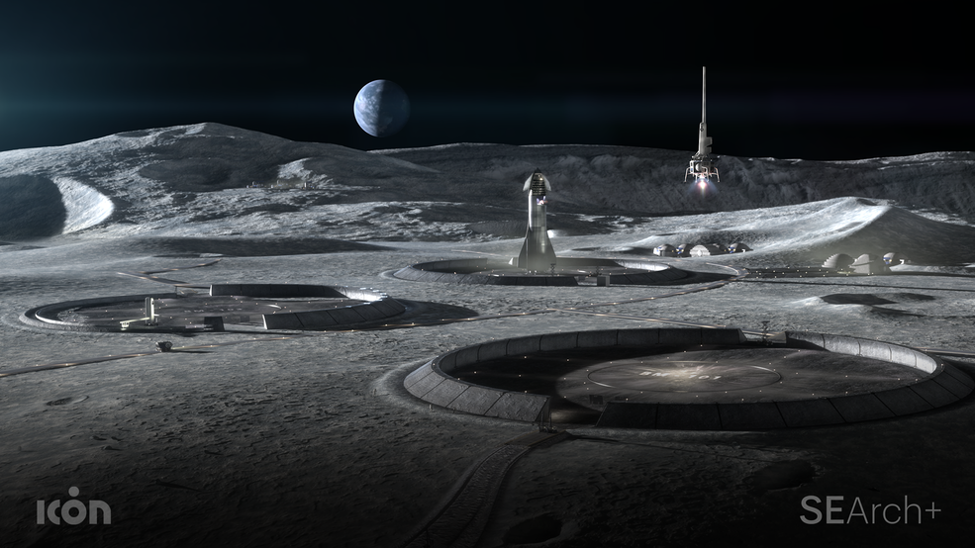Making a Home on the Moon and Mars with ISRU Technology
An artist’s visualization of a 3D printed moon base based on ICON’s current designs. Image Source: ICON/SEArch+
Did you know that it costs between $1,000 and $100,000 per kilogram to send items to low Earth orbit (LEO), and even more to send cargo further into space? On top of this high cost, it would also be time consuming and impractical to carry all the equipment, food, and other necessary materials to support astronauts during year-long stays on places like Mars that take months to reach. While launch companies are constantly innovating to reduce the high cost of launches through reusable rockets and other ground-breaking solutions, methods for keeping crews well-supplied during long missions to distant planets are still in their early stages, especially on the commercial front. With NASA’s plans to send people to Mars in the 2030s and the upcoming Artemis missions to the Moon, solutions that use raw materials on other planets and moons will become increasingly important in the next decade.
The process of designing and using systems and equipment that convert local, extraterrestrial raw materials into usable resources to support the lives of astronauts and achieve mission success is in-situ resource utilization (ISRU). Although you may think of the surfaces of Mars and the Moon as desolate, empty, and hostile to life, both of these places offer many resources and opportunities for scientists and engineers to create habitats and resources for human survival.
For example, astronauts could use Martian and Lunar regolith, or soil, to construct 3D printed shelters on Mars and the Moon. NASA has partnered with a company called ICON on a project to develop this capability called Project Olympus. ICON formed this partnership with NASA when it competed in the 3D Printed Habitat Challenge in 2019. Large 3D printers would construct such shelters from regolith-based concrete. Packing a 3D printer in the limited cargo hold of a rocket carrying a mission to the Moon or Mars would be an efficient use of space and would enable the astronauts to build crew housing, research labs, launch platforms, and more. Besides being widely abundant on the surfaces of Mars and of the Moon, regolith also has radiation-proof properties. This is especially important considering the significantly higher levels of radiation that reach these places compared to Earth.
Mars’s atmosphere is much thinner than Earth’s and it has a high concentration of carbon dioxide -- two things that make it extremely inhospitable to human life. Nevertheless, an experiment onboard Perseverance, the rover that landed on Mars in February 2021, called the Mars Oxygen In-Situ Resource Utilization Experiment (MOXIE) was able to produce oxygen on Mars for the first time on April 20th, 2021. Although this experiment did not produce nearly enough oxygen to be usable, this proof of concept is a milestone in the journey towards the large-scale development of such machines. Oxygen from a process like the one MOXIE used could supply oxygen for crews or be used to produce rocket fuel for the return trip. In general, ISRU technologies remain mostly conceptual, but there are an increasing number of commercial ventures in this area. Many of the companies in this area, such as the Asteroid Mining Corporation in the UK, are also currently developing business plans around space mining of raw materials for terrestrial use instead of on-site use in space. It will likely take a larger number of organizations actively planning crewed missions to other planets before ISRU technology will become commercially viable. Thanks to the high likelihood of strong future demand for ISRU technology, current foundational research, and the remarkable innovation in the commercial space industry, it is exciting to imagine the advances the next decade of ISRU research will bring to the market and the future of humans in space.
Sarah Myers is a Sophomore in Georgetown's McDonough School of Business studying Operations & Analytics and Finance. She is interested in studying the ways in which commercial space startups are changing the future of the space industry.

